Tonight, Waterfront Toronto is hosting a public meeting to collect feedback for their recent release of a new design scheme that reflects the proposed density increase for Villiers Island. While the focus of the meeting is the density, it is another aspect of the plan that additional attention and consideration should be drawn to.
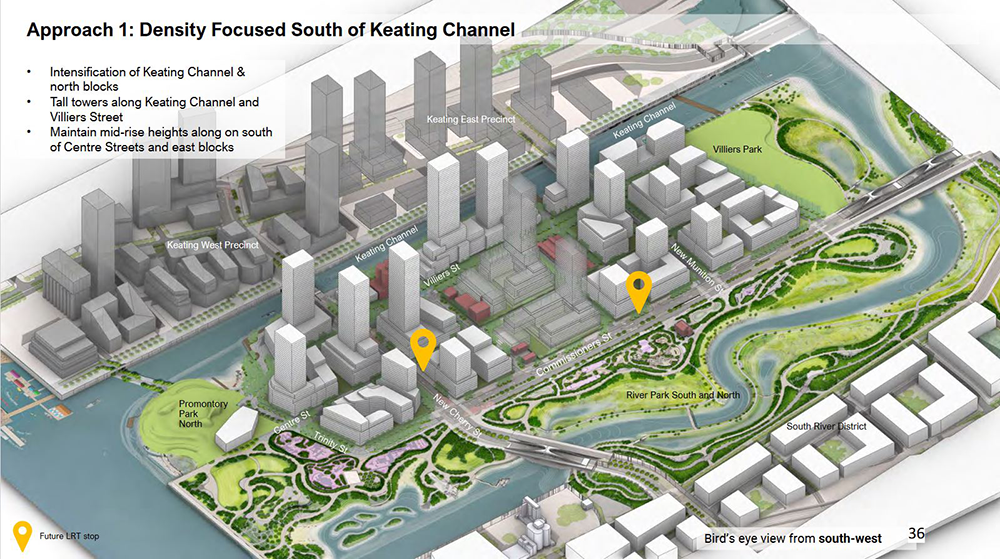
Just like several other projects underway along Toronto’s waterfront, the vision for Villiers Island highlights innovative ideas that could truly reshape our city. This potential for exceptional transformation calls for a closer look to critically examine some of the key aspects of the proposal.
The future of our city and extraordinary waterfront demands us to be bold and ambitious in designing this land, questioning the plan and to not miss this opportunity to envision the kind of vibrant urban living we dream of for our future waterfront.
One primary concern lies in the plan’s heavy reliance on car-centric infrastructure. Overly wide streets, and large blocks with deep buildings that will result in unusable floor plates and dark residential units.
In a survey results that Waterfront Toronto shared, 747 individuals completed the survey and clearly stated that the most important guiding principle is to “prioritize pedestrian, cycling and transit…”, and the rest is secondary to that core principle. Overly accommodating and prioritizing vehicular traffic detracts from creating a pedestrian-friendly environment, and hinders the development of a safe, vibrant public realm that encourages walkability.
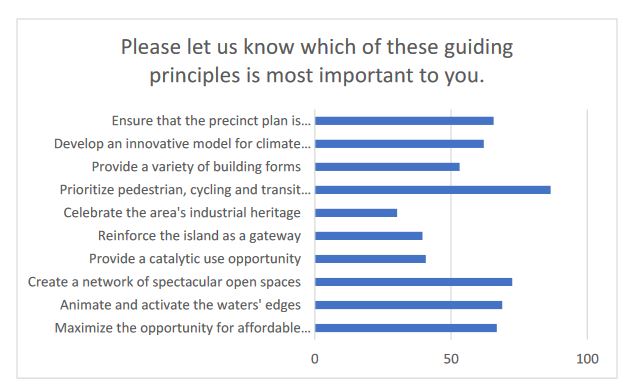
Cars remain the dominant mode of transportation in our society, significantly shaping our daily routines and habits. An overwhelming 87% of GTA households rely on cars for their daily commute. A full shift to a car-free urban lifestyle may not be feasible in the short-term. However, the creation of a new neighbourhood on Toronto’s waterfront presents a unique opportunity to challenge traditional practices, and introduce innovative, visionary solutions that we can be proud of for generations.

The future Villiers Island neighbourhood is located within a short walking distance of downtown Toronto and with excellent access to existing and planned public transportation options like the future Waterfront LRT, Cherry St Streetcar, Ontario Line, and the transit hub at East Harbour. It provides a solid foundation for strategically integrating principles of car-free living. This includes offering various shared transportation options, designing narrow and charming streets to foster human scale and speed, utilizing alternative pavements instead of asphalt, prioritizing pedestrian and cycling infrastructure, and designing with sustainability in mind.
But here, this future neighbourhood has the potential to serve as a model for how urban areas can transition towards a safer, more inclusive, and eco-friendly future.
One inspiring example to look up to is Merwede, a groundbreaking car-free neighbourhood in Utrecht, Netherlands. Merwede serves as a compelling demonstration of how urban spaces can be reimagined without relying on traditional car access. Merwede’s innovative approach places a strong emphasis on active transportation, with parking garages situated on the outskirts of the district to accommodate 1,500 cars. The neighbourhood features dedicated bike lanes, efficient car-sharing services, a low parking ratio of 1 parking spot per 3 residential units, and pedestrian-friendly pathways.
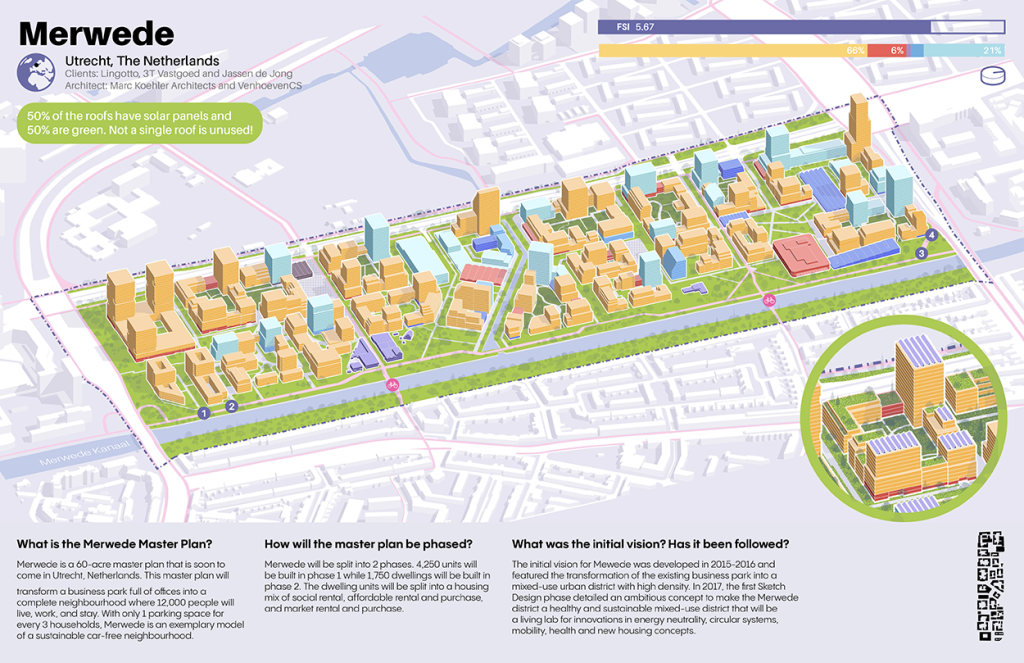
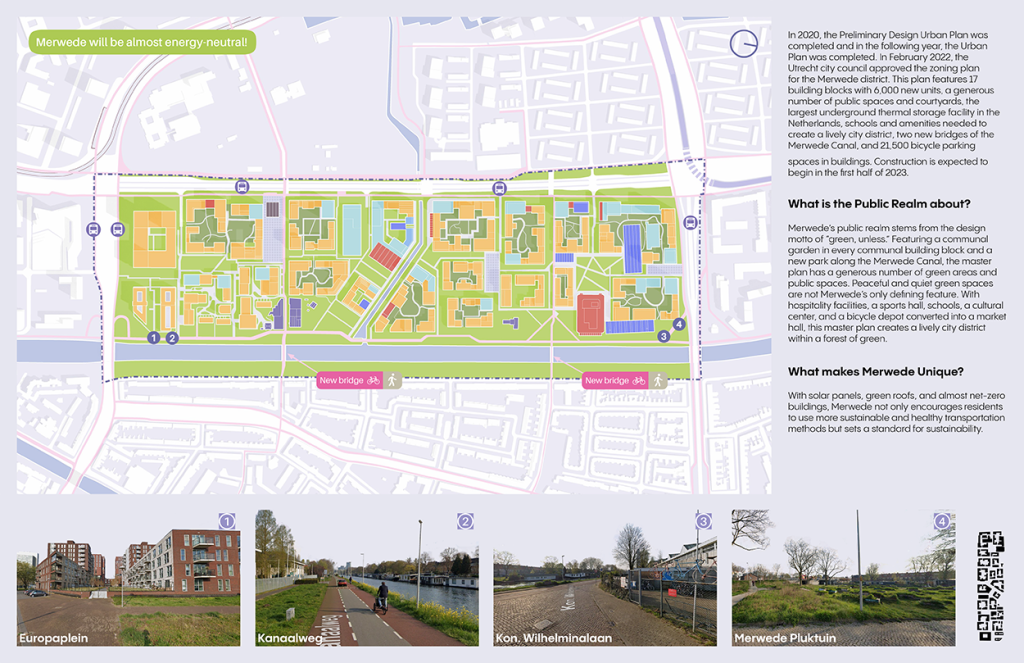
Embracing a car-free or car-light concept doesn’t mean sacrificing convenience, especially in an area like our waterfront. Instead, it opens doors to innovative solutions like efficient public transit, shared mobility options, and networks designed for pedestrians of all ages and cyclists. By prioritizing sustainable modes of transportation and advocating for narrower streets compared to the proposed Rights-Of-Way of up to 40 m currently under consideration, Villiers Island can reclaim valuable urban space for greenery, public gathering spots, and high-quality public realm that are not only safe but also charming and enjoyable.
Another example comes from one of our recent award-winning master plans near a future GO station. In this 1 km-long, 115-acre new neighbourhood, we introduced several innovative street typologies. Approximately 2/3 of the streets in this neighbourhood are either car-light (shared streets) or completely car-free, with the remaining 1/3 designated as traditional vehicular streets.
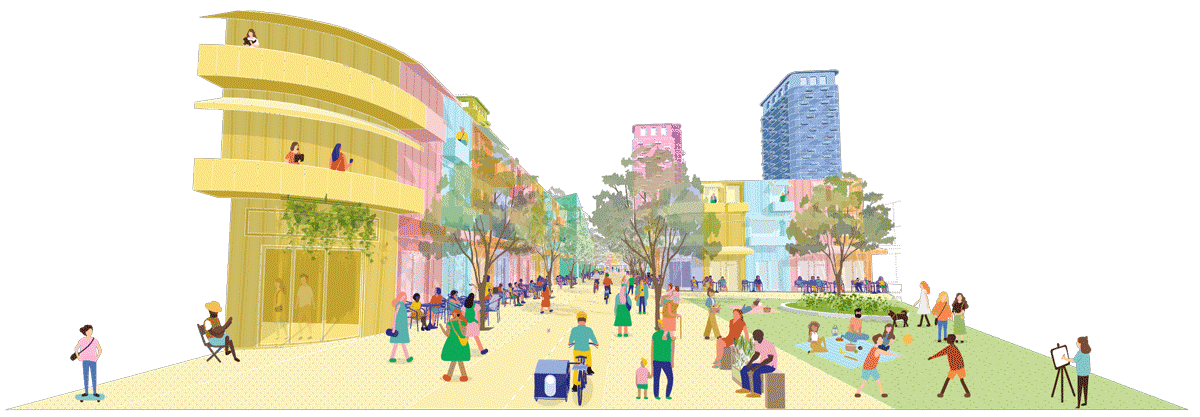
Street sections to prioritize people over cars
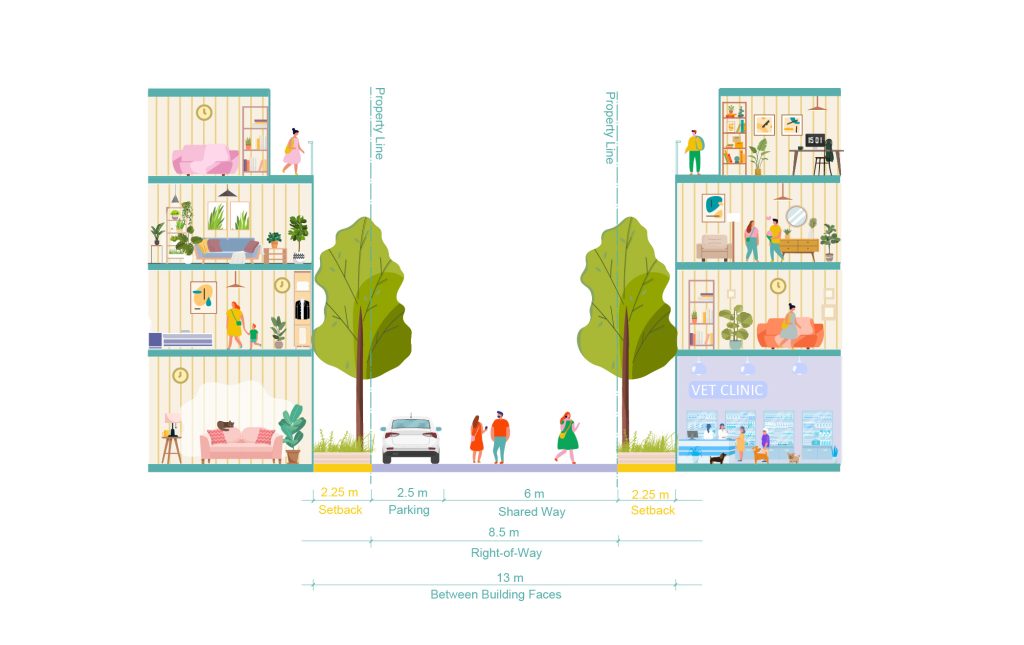
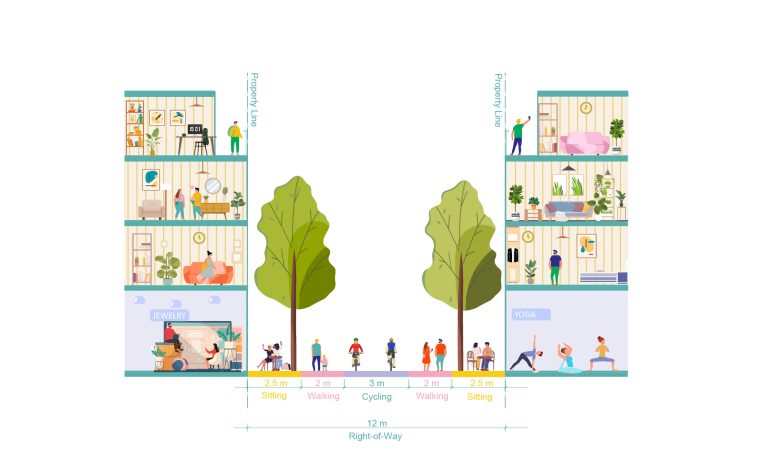

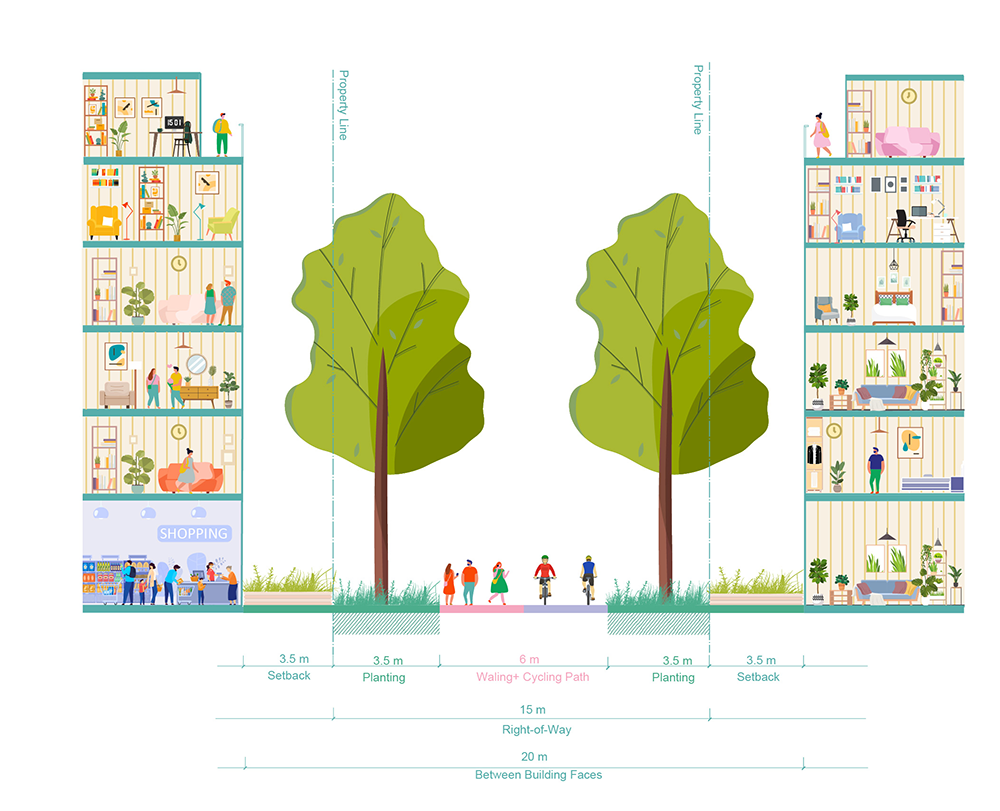
Our new neighbourhood is dense and includes several tall buildings, but does not sacrifice the pedestrian experience at grade. As architects and urban designers, we know first hand, that often times the applicant has the best intentions and it is actually the municipality and their traffic guidelines that demand the streets to be overly wide. As we always joke, traffic engineers are the real urban designers of our cities.
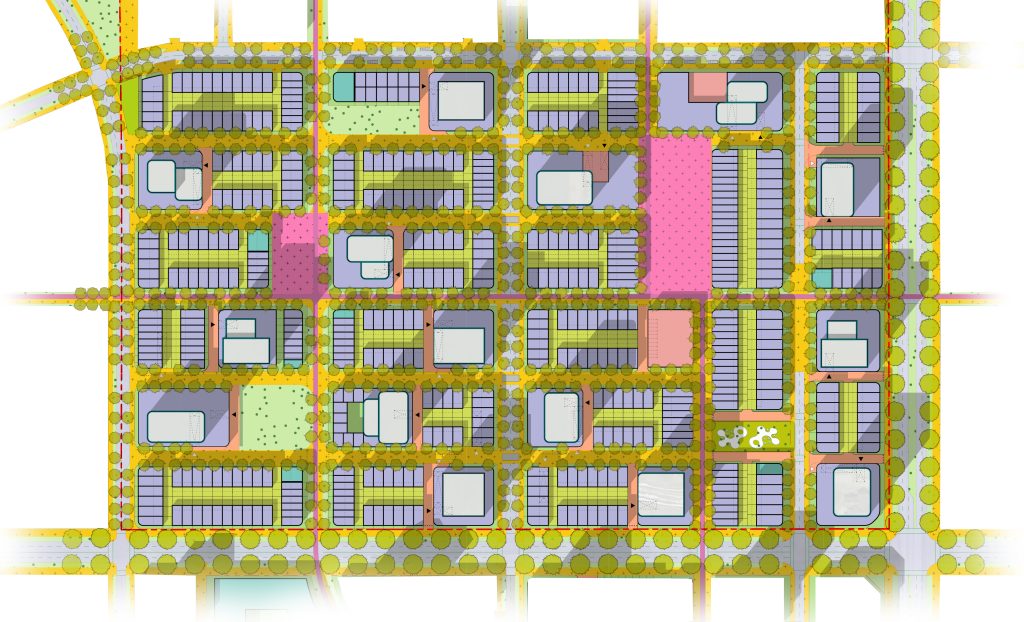
Waterfront Toronto’s master plan presents a crucial opportunity to incorporate these progressive principles. By reimagining streets as lively public spaces, optimizing block sizes to enhance walkability, and refining residential designs to maximize natural light and livability, we have the potential to create a neighbourhood that thrives on inclusivity, sustainability, and innovation.
One last note to the team at Waterfront Toronto,
Waterfront Toronto stands at the forefront of urban innovation, consistently championing sustainability, equity, and quality of life in their endeavors. As you continue to shape the future of the waterfront, you have a unique opportunity to reaffirm your commitment to these core values.
You are already setting a new standard for inclusive, environmentally conscious urban development. This moment presents a continuation of your legacy—a chance to inspire, collaborate, and pave the way for a more resilient and equitable cityscape.
Because if not here, then where?
